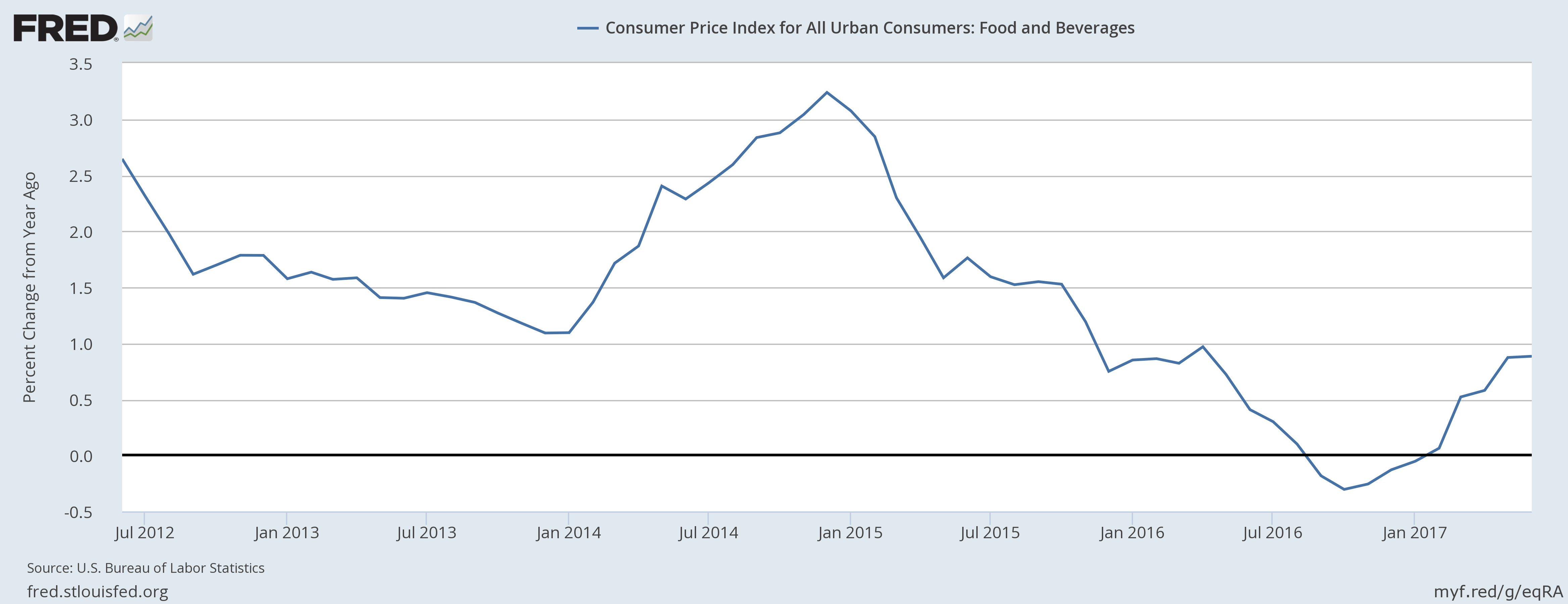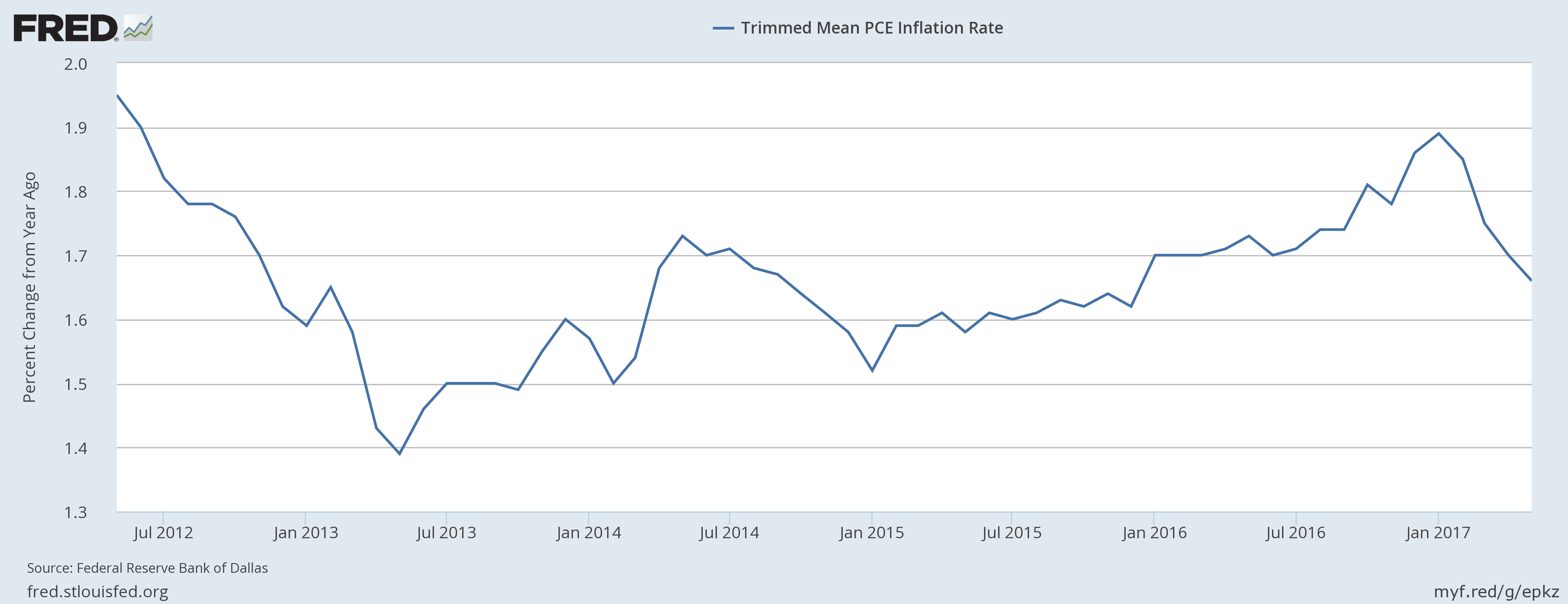For the duration of this expansion, the Federal Reserve has continually predicted an increasing pace of inflation. While their overall rate of projections has trended somewhat lower during the last five years, they still believe inflation will be somewhat higher in the next 12 to 18 months. The data does not support their projections.
The consumer price index, personal consumption expenditures deflator, the Dallas Feds 16% trimmed mean CPI index, and the Cleveland Feds median CPI reading all indicate little to no meaningful inflationary pressure in the economy as a whole.
Let’s start by looking at the two most commonly referenced inflation measures: the CPI index and CPI less food and energy (sometimes referred to as core prices).

Core prices (in red above) have been remarkably consistent. They printed between two and 2.5% for all of 2016. Since the beginning of the year, they’ve trended lower. Total CPI (in blue above) was near 0% for the first half of 2015. Eight rose steadily until the beginning of 2017, eventually printing slightly above 2.5%. But it has moved sharply lower since as the just above 1.5%.
Let’s take a detailed look at both food and energy prices:


Food prices (top chart) are incredibly weak. While they were slightly above 3% at the beginning of 2015, they have been trending lower since, eventually turning negative at the end of 2016. They’ve rebounded at the beginning of this year, but are now below 1%.
Energy prices (bottom chart) were negative between the fourth quarter of 2014 and the final quarter of last year. They moved higher at the beginning of this year but have since moved lower. Energy prices collapsed in late 2014 when OPEC opened the floodgates of production, hoping to drive US drillers from the market. But since then, the breakeven point for frackers has dropped from ~$80.00/BBL to ~50/BBL. At current price levels, U.S. oil production is coming back online, contributing to a global supply glut. With the exception of a recent spike in wheat prices, there is little reason to believe that either food or energy prices will lead to inflationary pressures.
The personal consumption expenditures deflator is the Federal Reserve's preferred inflationary measure. This is probably due to the fact that it’s the price index consumers see on a regular basis. Here is a chart of the year-over-year percentage change in both the overall and core measure for this statistic:

The core measure (in red) has yet to broach 2%. The overall measure (in blue) increased to a little above 2% at the beginning of this year but has since moved lower. This inflationary measure clearly signals that there’s no meaningful inflationary pressure in the economy
Let’s look at two additional measures of inflation, each produced by a different Federal reserve bank. The first is the Dallas Fed's trimmed mean CPI measure. This inflation metric deletes a small percentage of spikes at the high end and low and inflation readings. The idea is that a certain number of extreme readings are outliers and should therefore be ignored when trying to determine a long-term. Here is a five-year chart of that data:

The annual rate of change hasn’t broached 2% in 5 years.
Next, let’s look at the Cleveland Feds median CPI index:

Like the Dallas Fed trimmed mean number, this inflation measure has been trending sideways for the better part of the last five years. Over the last few months, it has moved lower. The conclusion we draw from this inflation reading is the same as that of the Dallas Feds number: prices are increasing and a consistent but non-threatening rate.
Recently, the Federal Reserve has argued that a change in the way the BLS calculates a cell phone prices was responsible for the overall weak reading in CPI. This measure of prices represents less than 4% of overall CPI. It is therefore doubtful it has had the impact the Fed is arguing it has.
It doesn't matter which inflation guage you use; they all show that price pressures just aren't that high. The Fed should probably stop arguing that the economy will eventually return to 2% inflation rate.
